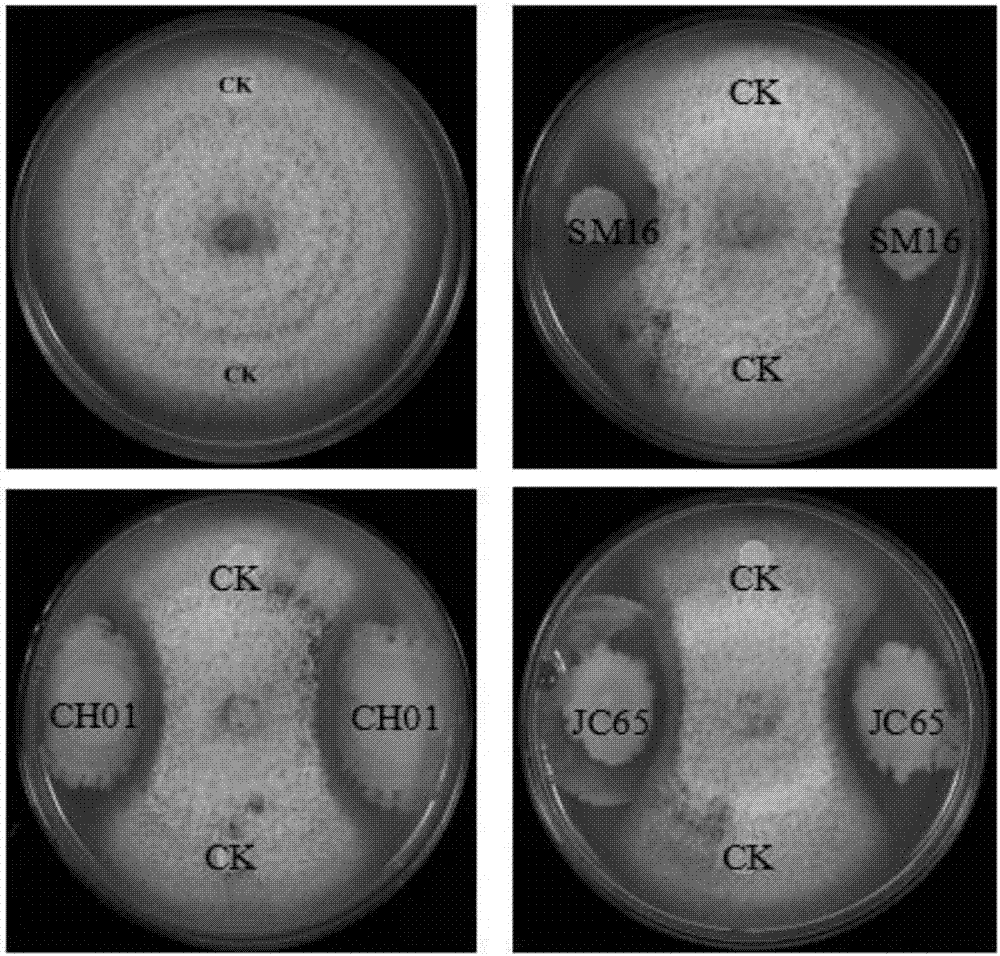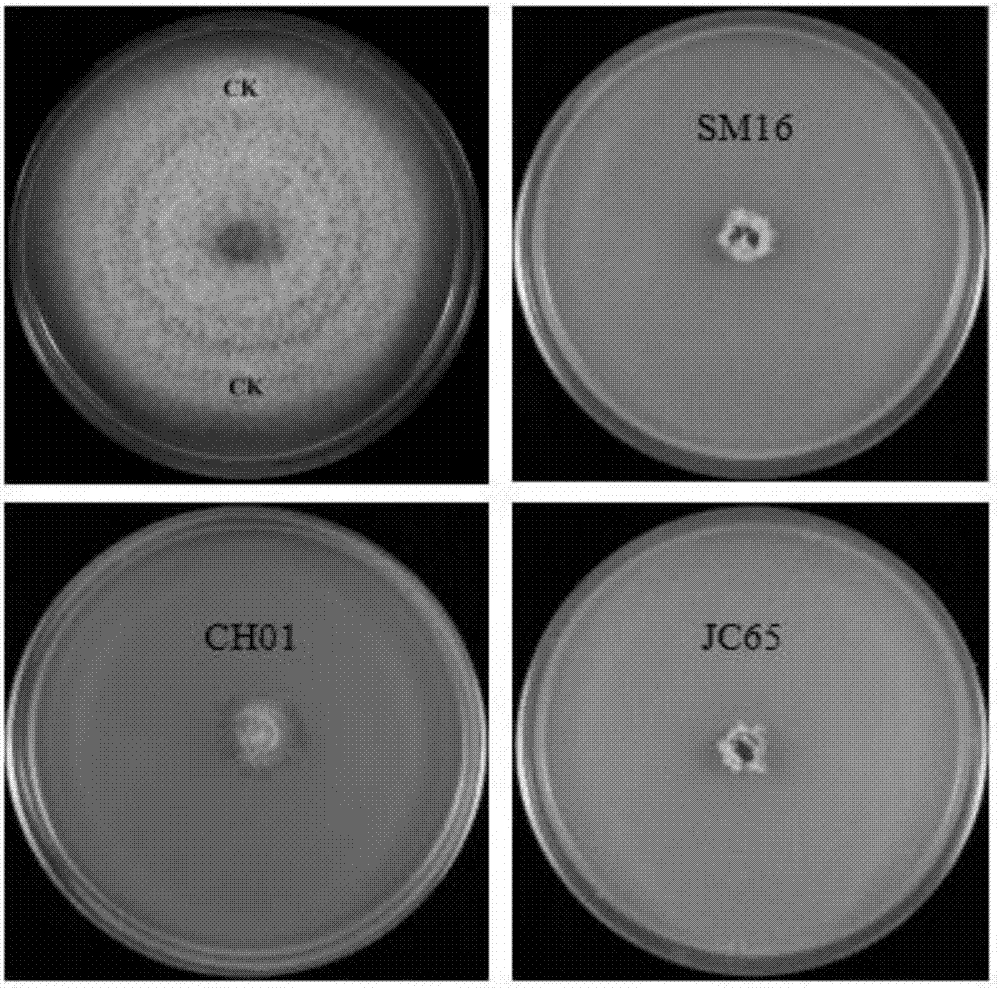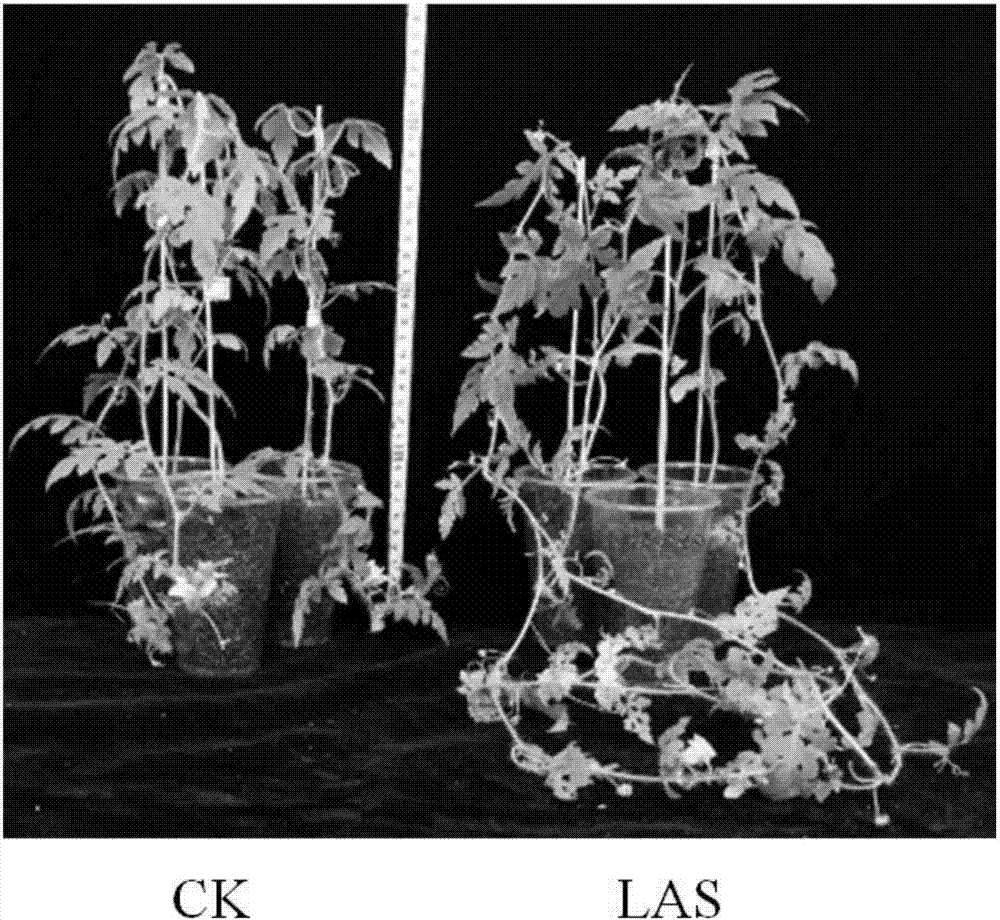A biocontrol composite bacterial agent las that can effectively prevent and control various crop wilt diseases
A technology of melon wilt and microbial composition, which is applied in the direction of plant growth regulators, plant growth regulators, biocides, etc., can solve the problems of poor colonization ability and unsatisfactory control effect of bio-control bacteria, and achieve the goal of saving costs Effect
- Summary
- Abstract
- Description
- Claims
- Application Information
AI Technical Summary
Problems solved by technology
Method used
Image
Examples
Embodiment 1
[0029] 1. Source of strains: JC65 was isolated from cucumber rhizosphere soil; SM16 and CH01 were isolated from root soil of healthy tomato plants.
[0030] 2. Strain isolation method: using plate dilution method (refer to Microbiology Laboratory of Nanjing Institute of Soil Science, Chinese Academy of Sciences. Soil Microbial Research Method [M]. Beijing: Science Publishing Du, 1985.).
[0031] 3. Basis for strain screening: Determination of antagonism between watermelon wilt pathogen and biocontrol bacteria (confrontation culture method, Lin Fucheng, Li Debao. Bacillus subtilis (Bacillus subtilis) on phytopathogenic fungi Lysis effect[J].Plant Acta Pathologica Sinica, 2003, 33(2): 174~177. Greenhouse and field experiments on the effect of biocontrol bacteria on the control and growth promotion of watermelon Fusarium wilt.
[0032] 4. Strain identification method: identification by sequence sequencing of prokaryotic 16S rRNA coding gene fragments. The identification results ...
Embodiment 2
[0048] Inoculate the strains JC65, CH01 and SM16 on the LB plate and streak them respectively, and culture them in a biochemical incubator at 28°C for 14-16 hours. After a single colony grows, pick a single colony and insert it into a test tube containing 5 mL of LB culture medium. Cultivate in a shaker at 28°C and 200r / min to make a seed solution; inoculate the seed solution with 1% of the inoculum in a conical flask containing 500mL of LB culture solution, place at 28°C and 200r / min Cultivate in a shaker for 48 hours, and dilute the concentrations of the three bacterial solutions to 5×10 7 After CFU / mL, mix evenly according to the ratio of 1:1:1, which is the microbial complex agent.
Embodiment 3
[0049] Embodiment 3 greenhouse growth-promoting experiment
[0050] When the watermelon seedlings grow to the 3-4 leaf stage, select watermelon seedlings with consistent growth and transplant them into pots containing nutrient soil, and transplant 10 watermelon seedlings for each treatment. On the day after transplanting, 20mL of 5×10 7 CFU / ml of the corresponding biocontrol bacteria, 30 days after transplanting, add another biocontrol bacteria. Take clear water as a control. The growth promotion of each group was observed every day.
[0051] The results are shown in Table 4 and image 3 .
[0052] Total (average) fresh weight = underground fresh weight + aboveground fresh weight
[0053] Growth-promoting effect=[(average fresh weight of treatment-average fresh weight of clear water control) / average fresh weight of clear water control]×100%
[0054] Table 4 The growth-promoting effect of compound bacterial agent LAS on watermelon (transplanting 30d)
[0055]
[0056]...
PUM
 Login to View More
Login to View More Abstract
Description
Claims
Application Information
 Login to View More
Login to View More - R&D
- Intellectual Property
- Life Sciences
- Materials
- Tech Scout
- Unparalleled Data Quality
- Higher Quality Content
- 60% Fewer Hallucinations
Browse by: Latest US Patents, China's latest patents, Technical Efficacy Thesaurus, Application Domain, Technology Topic, Popular Technical Reports.
© 2025 PatSnap. All rights reserved.Legal|Privacy policy|Modern Slavery Act Transparency Statement|Sitemap|About US| Contact US: help@patsnap.com



